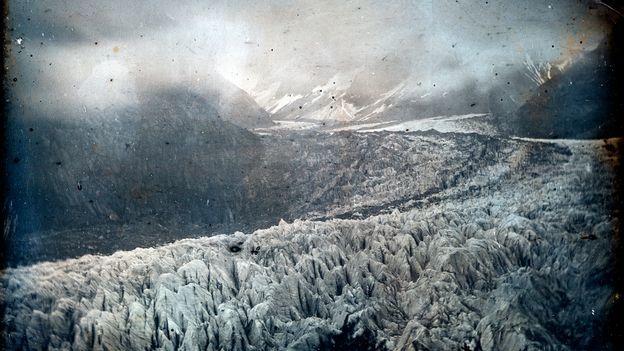
This French glacier has given rise to countless works of art in the past 200 years, including Mary Shelley’s Frankenstein. Paintings, photographs and modern satellites reveal how the site has dramatically transformed since Shelley was first transfixed by it.
In the 1800s, above the town of the Chamonix in the French Alps, there was a sublime sight known as the “sea of ice” that provoked both awe and a touch of dread. Those who climbed up the mountain trails to see it would encounter an icy, barren expanse of white, dark blue and aquamarine. Visitors described a scene
Many artists at the time painted this icy sea, but one of the most striking images is an early photograph: a gloomy daguerreotype taken by an assistant of the writer John Ruskin in the 1850s (above).
This was the “Mer de Glace” glacier – a mass of compacted snowfall, creeping down from the Mont Blanc massif. For centuries, it has remained the largest glacier in France, and was one of the first to be studied scientifically.
Sadly, it has shrunk profoundly since then – more than 2.5km (1.6 miles) since the mid-1800s – and as I discovered following a recent visit, it is barely visible from the same point that the Ruskin photo was taken. The melting is accelerating, and by 2050, scientists anticipate it could retreat by at least 2km (1.2 miles) further, even with stringent emissions reductions.